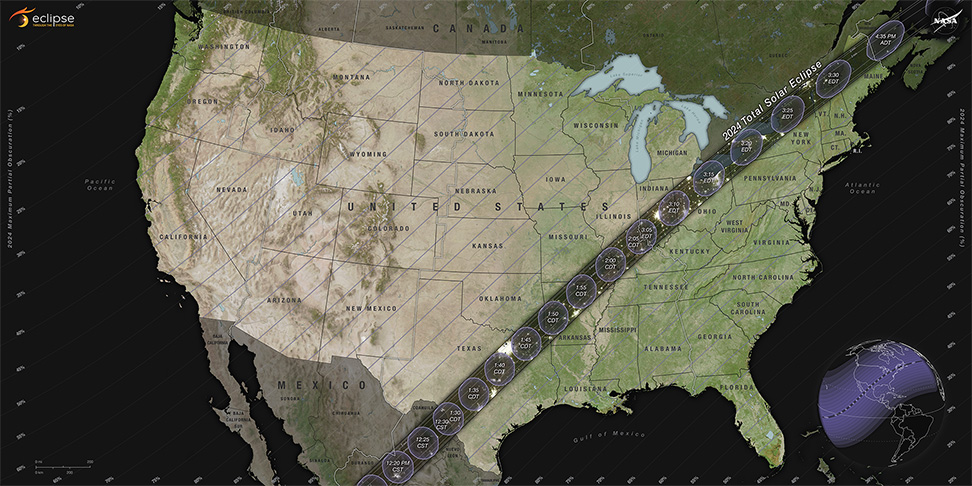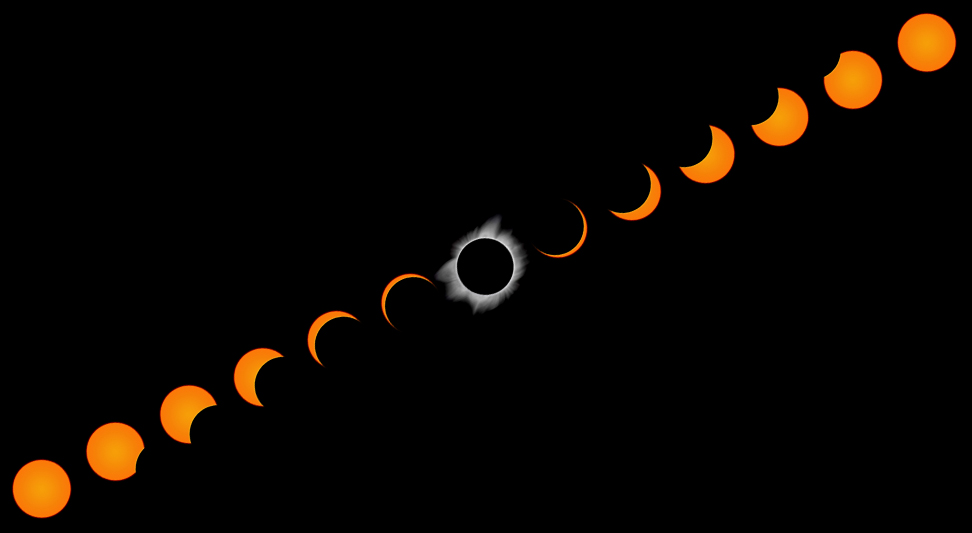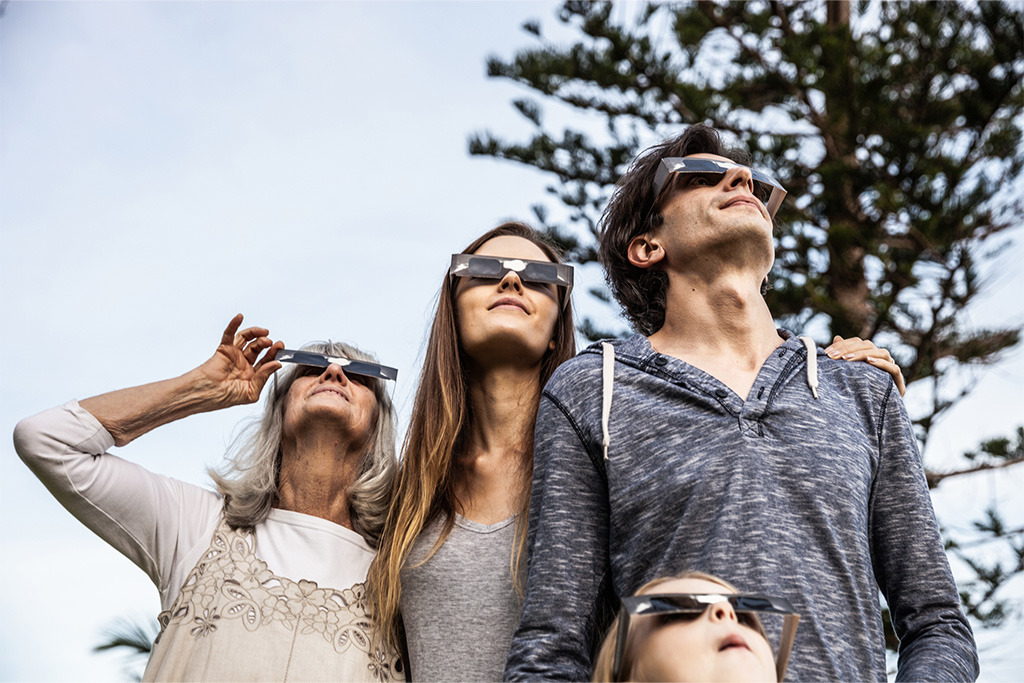The celestial stage is set for an extraordinary event that will captivate the eyes of spectators across North America by turning daylight into dusk.
On Monday, April 8, a total solar eclipse will grace our skies, offering a breathtaking spectacle as the moon casts its shadow upon the Earth. For those lucky enough to be within the path of totality, this celestial dance promises an experience like no other.
What is a Total Solar Eclipse?
A total solar eclipse occurs when the moon passes directly between the Earth and the sun, obscuring the sun’s light and casting a shadow on the Earth. This phenomenon transforms day into an eerie twilight as the sun’s corona becomes visible, creating a mesmerizing spectacle for onlookers.
Timeline of the Total Eclipse
The journey of the total solar eclipse will commence over the South Pacific Ocean before making its way northeastward, crossing Mexico, the United States, and Canada.

Here’s a brief timeline of its path:
- The total eclipse begins over Mexico’s Pacific coast at approximately 11:07 am PDT (1:07 pm CDT).
- The totality enters the U.S. in Texas and traverses several states, including Oklahoma, Arkansas, Missouri, Illinois, Kentucky, Indiana, Ohio, Pennsylvania, New York, Vermont, New Hampshire, and Maine. Portions of Tennessee and Michigan will also witness the total eclipse. A partial eclipse will be visible throughout the continental United States.
- In Oklahoma, the eclipse starts at 12:27 pm CDT, reaches totality at 1:44 pm CDT, and concludes at 3:05 pm CDT.
- After crossing the U.S., the eclipse continues into Canada, passing through Southern Ontario, Quebec, New Brunswick, Prince Edward Island, and Cape Breton before exiting North America on the Atlantic coast of Newfoundland at 5:16 pm NDT (3:16 pm CDT).
You can use NASA’s Eclipse Explorer tool to find out when and where to view the total eclipse in your area.
Experience the Eclipse in OKC at Science Museum Oklahoma
Experience the excitement of viewing the eclipse at Science Museum Oklahoma’s totally fun eclipse event in Oklahoma City.
In front of the museum (no admission required)
- Telescopes with special filters will be set up in front of the museum for viewing the eclipse safely.
- Learn how to create indirect viewers to watch the eclipse. All materials provided.
- Eclipse demonstrations to show unconventional ways to view the eclipse.
Inside the museum
- Activity tables are open from 10 am to 1:30 pm
- 11:30 a.m. – Enjoy Storytime Science on the Science Floor Side Stage, with a special eclipse-themed story and corona art activity just for our youngest astronomers!
- Live feeds from the path of totality
- UV bead bracelet creation
SMO Gardens
- Activity tables are open from 10 am to 1:30 pm
- Sun Prints! This fun activity uses photographic paper and sunlight to make art with different items you can find in the garden.
Total Safety Precautions for Viewing the Total Solar Eclipse

While witnessing a total solar eclipse is a momentous event, it’s crucial to prioritize eye safety. Staring directly at the sun during an eclipse can cause severe damage to your eyes. Even when the sun is partially obscured, its intense radiation can harm your vision.
Those who have had LASIK, PRK, EVO ICL, Lens Replacement, or Laser Cataract Surgery are no different from anyone else in terms of the safety guidelines they should follow to protect their eyes during a solar eclipse.
Schedule your FREE OKC LASIK consultation at nJoy Vision
Or call
Here are some safe ways to experience a solar eclipse:
Solar Eclipse Glasses – Invest in specially designed glasses with solar filters that block harmful rays. Ensure they have the ISO 12312-2 safety standard certification.
Pinhole Projection – Create a pinhole projector using cardboard or paper to project an image of the eclipse onto a surface. It’s a safe and fun way to experience the eclipse without directly looking at the sun.
Welder’s Glass – Welder’s glass with a rating of #14 or higher can also be used to view the eclipse safely.
Mylar Filters – Approved solar filters made of aluminized mylar are safe for eclipse viewing and can be used with telescopes or binoculars.
Guidelines for Using Solar Eclipse Glasses
- Inspect the glasses for any damage or scratches before use.
- Put the glasses on before looking at the sun.
- Wear your solar eclipse glasses for the duration of the eclipse, except during the brief period of totality when the sun is completely covered. Even then, remove your glasses with caution.
- Supervise children to ensure they’re using eyewear properly.
Solar Eclipse Faux Pas: What NOT to Do for a Stellar Viewing Experience
- Never gaze directly at the sun without wearing appropriate eye protection, regardless of the duration.
- Avoid using your phone or any digital device to view the sun directly. Doing so can lead to severe damage to both the device’s sensors and your eyes, particularly if you inadvertently glance at the sun while aligning your shot.
- Refrain from looking at the sun through a camera unless you have proper eye protection. Even viewing it through the camera’s viewfinder can result in eye damage similar to direct exposure.
- Steer clear of using inadequate filters on any viewing equipment, such as telescopes, binoculars, or cameras. Always opt for certified solar filters specifically designed for these devices.
Snap Safely: Eclipse Photography Pro Tips
For aspiring astrophotographers and iPhone photographers, here are some essential tips for capturing the eclipse effectively and safely:
- Ensure you have the necessary equipment. Pack your gear bag with eclipse glasses for eye protection, the appropriate solar filter for your camera, and a reliable tripod.
- Practice in advance. Take the time to practice setting up your camera on a sunny afternoon before the eclipse. This exercise will help you become familiar with handling your camera’s solar filter and adjusting settings while wearing your eclipse glasses.
- Seek guidance from NASA. Utilize NASA’s solar eclipse map to identify optimal viewing locations. Being near the center of totality during a total eclipse can offer extended viewing time and enhance your experience of capturing the celestial event.
- Monitor the weather. Keep an eye on weather forecasts as conditions greatly affect eclipse visibility. Consider having alternative locations with better visibility in case of unfavorable weather.
- Develop a strategy. Plan ahead by determining the precise timing and location of the eclipse. A game plan will assist you in arriving at your viewing spot on time, positioning your camera effectively, and framing your shots for the best results.
Totally Enjoy a Safe Solar Eclipse
With these safety precautions in mind, you can enjoy the awe-inspiring beauty of the total solar eclipse on Monday, April 8, 2024, without compromising your vision. Remember to cherish this rare celestial event responsibly and share the wonder with friends and family.

